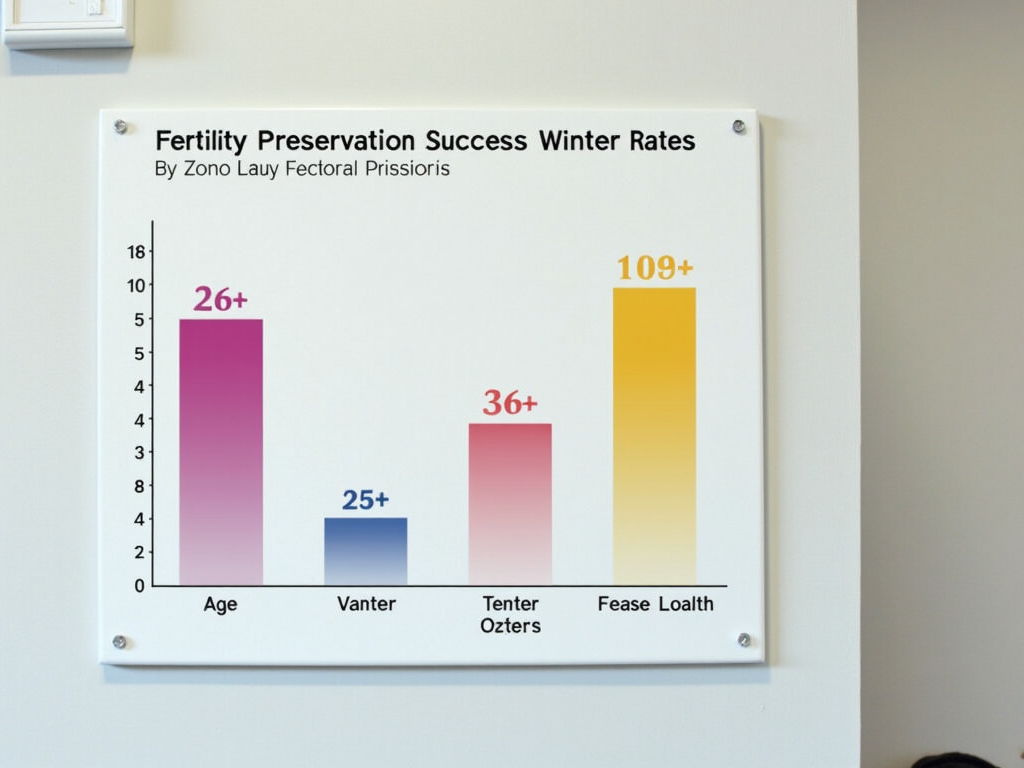Fertility Preservation Techniques for Cancer Patients: A Comprehensive Guide
March 11, 2025, 5:36 p.m.
Overview
Fertility preservation offers hope to cancer patients who dream of having children. This article dives into various techniques, how age affects options, and provides practical insights for navigating this emotional journey.
What Is Fertility Preservation?
Fertility preservation means saving eggs, sperm, or reproductive tissue so you can have kids later. For cancer patients, it’s a big deal because treatments like chemo or radiation can lead to infertility. It’s about protecting your future while fighting for your health today.

The process usually happens before treatment starts. Time is tight, but it’s worth it. Fertility preservation gives you a chance to plan ahead, offering peace of mind during a tough time.
Why It Matters for Cancer Patients
Cancer treatments save lives, but they can harm your ability to have kids. Chemotherapy might damage eggs or sperm. Radiation near reproductive organs can do the same. For some, surgery removes those organs entirely.
Picture this: You’re 30, just diagnosed with cancer, and kids aren’t even on your radar yet. Suddenly, you’re told treatment could take that option away. Fertility preservation techniques for cancer patients step in here, giving you a way to keep that door open.

Techniques for Women
Women have a few solid options to preserve fertility. Each one fits different needs, depending on your situation.
Egg Freezing
Egg freezing, or oocyte cryopreservation, starts with hormone shots to boost egg production. Doctors then retrieve the eggs and freeze them. It takes about two weeks—perfect if you’ve got a little time before treatment.
- Best For: Single women or those not using donor sperm.
- How It Works: Eggs stay frozen until you’re ready to use them with IVF (in vitro fertilization).

Embryo Freezing
This is like egg freezing, but the eggs get fertilized with sperm first. You end up with frozen embryos, which can be implanted later. It’s a top choice for couples.
- Success Tip: Embryos often have better survival rates than unfertilized eggs.
Ovarian Tissue Freezing
Still experimental, this method freezes a piece of your ovary. After cancer treatment, doctors can put it back to restore fertility. It’s great for women who can’t wait or young girls not yet ovulating.

Techniques for Men
Men’s options are simpler and quicker, which is a relief when time’s short.
Sperm Banking
Sperm banking is the go-to method. You provide a sample, and it’s frozen for later use. It’s fast—done in days—and highly effective.
- Best For: Any man past puberty who can produce sperm.
- Pro Tip: Freeze multiple samples for better odds.

Testicular Sperm Extraction
If you can’t produce sperm naturally, doctors can take it directly from your testicles. It’s a small surgery, but it works for men facing infertility before treatment even starts.
Fertility Preservation and Age
Age changes everything when it comes to fertility preservation. Younger patients usually have better results.
Women and Age
- Under 35: Your eggs are at their best—higher quality, better success rates.
- 35-40: Still doable, but the odds drop a bit.
- Over 40: Tougher, since egg quality declines naturally.

Men and Age
Men’s sperm quality dips with age, but not as sharply. A 45-year-old can still bank sperm successfully, though younger is better.
Fertility preservation and age go hand in hand. Talk to a specialist early to understand your chances.
Real Stories, Real Hope
Meet Sarah, 28, diagnosed with breast cancer. She froze her eggs before chemo. Five years later, cancer-free, she welcomed a baby girl. That choice gave her light in dark days.

Then there’s Mark, 32, with testicular cancer. He banked sperm before surgery. Today, he’s a dad to twins. These stories show fertility preservation isn’t just science—it’s hope you can hold.
Making Your Choice
Deciding on fertility preservation is personal. Ask yourself: - Can I delay treatment for a few weeks? - What’s my budget? (It can cost thousands, though some insurance helps.) - Am I ready for this emotionally?
Your doctor and a fertility expert can guide you. Don’t wait—bring it up as soon as you get your diagnosis.

What’s New in Fertility Preservation
Science keeps pushing forward. In vitro maturation (IVM) lets doctors mature eggs in a lab, skipping hormone shots. Artificial ovaries are in the works too—imagine implanting one post-treatment to regain fertility.
For young boys, testicular tissue freezing is being tested. It’s early, but it could change lives.
Where to Turn for Help
You don’t have to figure this out alone. Fertility clinics specializing in cancer patients can tailor plans for you. Support groups—online or in-person—connect you with others who get it.

Look into financial aid too. Groups like Livestrong Fertility offer discounts or grants to ease the cost.
Wrapping Up
Cancer doesn’t have to steal your chance at parenthood. Fertility preservation techniques for cancer patients—like egg freezing or sperm banking—let you fight for your life and your future. Age matters, so act fast. Talk to your team, weigh your options, and take control.